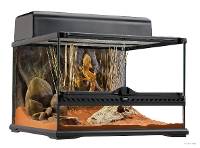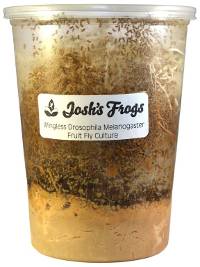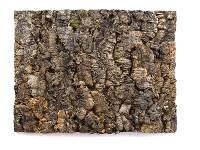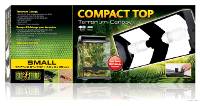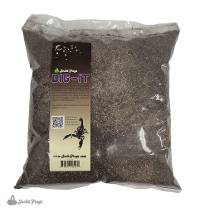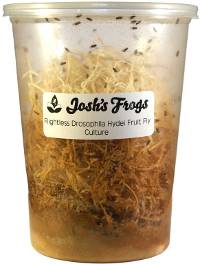Josh's Frogs
Why you should buy from us
Western Hognose Snake - Heterodon Nasicus Nasicus (Captive Bred)
Western Hognose Snake - Heterodon Nasicus Nasicus (Captive Bred)
$199.99 0.0 out of 5 stars
(0)
0.0 out of 5 stars
(0)About This Product
Defining Characteristics:
- Popular small snake species
- Unique colors and pattern morphs
- Active at night
- Known for funny defensive behaviors
Name: Heterodon nasicus nasicus, more commonly known as the Western Hognose Snake, get their common name from the upturned scales on the tip of their snout, giving them a pig-like appearance. The scientific name nasicus comes from the Latin word “nasus” meaning nose.
Size: These are a small snake species, with adult males reaching an average length of 17 to 24 inches and females reaching lengths up to 35 inches.
Age: These snakes are relatively long lived, with an average life span being around 15 to 20 years depending on care and husbandry.
All hognose snakes sold by Josh’s Frogs are at least 4 weeks old when shipped.
Recommended Enclosure Size: Front opening enclosures are best for these snakes as they are very timid and scare easily if being handled from above. This, coupled with a small adult size, makes Exo Terra or similar enclosures the go to for most keepers.
For hatchlings an enclosure measuring 12x12x12 or similar will be an adequate size. For adult males an 18x18x12 is sufficient and a 24x18x12 works great for an adult female.
Enclosure Decor: These snakes are avid burrowers and as such do not need much height to an enclosure, but do require quite a bit of substrate to burrow in. Aspen is a good start as it is very effective at holding a burrow, however if you want something more naturalistic the Josh’s Frogs Dig-It substrate is a great option.
Cage decor is up to the individual keeper, however multiple hides should be provided so they have multiple places to go and feel secure. Cork flats make excellent hides as they are low to the ground and provide ample places for your snake to hide. Other sticks for climbing can also be added as these snakes have been observed climbing from time to time. Also be sure to provide a water dish and always make sure your snake has access to clean water.
Temperature (°F): A thermal gradient should always be provided for this species. The hot side should be around 90° and the cool side around 75°.
Humidity: This is definitely a drier species, with humidity requirements being only 30-50%. This is relatively easy to do, however if you live in a very dry climate an occasional misting on the cool side substrate would be helpful.
Exo Terra’s Combometer is a great tool to measure temperature and humidity in your animal’s enclosure!
Feeding: Hognose snakes will take a wide variety of prey from amphibians to other reptiles and small mammals. Because of this, it is best to offer your hognose a wide variety of prey although small pinkie mice are a good start.
Whatever food items are being offered, please make sure it is no larger than the snake’s head as these snakes do not seem to handle larger prey items very well.
Adults should be fed approximately once a week whereas hatchlings and juveniles should be fed every 4 to 5 days.
Venom: Care should be taken for the keeper as these snakes are rear-fang venomous. This means the fangs are at the back of the mouth and venom is injected by chewing. Western Hognose snakes generally only bite as a last resort and as such envenomations are quite rare. While the venom is widely considered to not be medically significant to humans, it can cause swelling around the bite wound and other adverse effects. These effects can potentially be life threatening if the person has an allergic reaction.
Defensive Behavior: Western Hognose snakes are known throughout the hobby for their wide array of defensive behaviors. They are capable of spreading out their ribs similar to the hood of cobras while emitting an intimidating hissing sound. This gives them a larger and tougher appearance to would-be predators.
If that doesn’t work they are known to “play dead” in which they will flip onto their back, open their mouth, and flop their tongues out. Even when put upright again they will immediately flip back over again.
As a last ditch effort they have been known to mock strike, which is when they strike at a predator but with their mouths closed.
Breeding: Breeding Western Hognose snakes is relatively straightforward. Males are sexually mature at 1 year old and females are generally considered mature at 2 years old. Breeding occurs right after a winter brumation period in which the hot spot is gradually dropped to around 60°F. Make sure to stop feeding about 2 weeks prior to brumation, as this allows any undigested food to be passed. Brumation should last around 2 to 3 months before gradually raising temps again.
Once temps are back up to proper levels, start offering the male food once a week and the female twice a week. This builds up their energy reserves and the female will be receptive to breeding shortly after a post-ovulation shed. This occurs around a month after feeding begins. The female will lay anywhere from 8 to 25 eggs which need to be incubated at 78-84°F. Generally the eggs will hatch between 48 and 60 days later.
Sexing: Western Hognose snakes can be somewhat easy to sex visually as the males have a longer more slender tail whereas the females have much shorter tails. Another method of probing or popping can be used, however this is dangerous if done incorrectly and should be avoided unless done by a professional.
Adults are much easier to sex than hatchlings and Josh’s Frogs does not sex any snakes prior to shipping.
Color/Pattern: Western Hognose snakes come in a wide array of colors and patterns. The standard or wild-type coloration is a light tan with brown or dark tan spots going down the back. However, thanks to the efforts of many breeders in the hobby, a wide array of color and pattern morphs now exist for people to choose from!
Breeding: Breeding Western Hognose snakes is relatively straightforward. Males are sexually mature at 1 year old and females are generally considered mature at 2 years old. Breeding occurs right after a winter brumation period in which the hot spot is gradually dropped to around 60°F. Make sure to stop feeding about 2 weeks prior to brumation, as this allows any undigested food to be passed. Brumation should last around 2 to 3 months before gradually raising temps again.
Once temps are back up to proper levels, start offering the male food once a week and the female twice a week. This builds up their energy reserves and the female will be receptive to breeding shortly after a post-ovulation shed. This occurs around a month after feeding begins. The female will lay anywhere from 8 to 25 eggs which need to be incubated at 78-84°F. Generally the eggs will hatch between 48 and 60 days later.
Natural Range: Western Hognose snakes inhabit a wide geographic range and are generally found across the United States from Illinois to Colorado and from southern Canada down to Mexico. They tend to prefer dry rocklands, grassy prairies, and inland coastal areas with sandy soil.
History in the Hobby: Western hognose snakes have always had a huge following in the hobby. This is due to several factors, from their viper-like appearance to their amusing threat displays and now their wide array of color mutations.
While originally collected from the wild, most western hognose snakes in the hobby today are captive bred and this has resulted in many different morphs being available thanks to the dedication of breeders of this species.
Helpful Links:
- The Ultimate (FREE!) Hognose Snake Care Guide | ReptiFiles
- Care And Breeding The Western Hog-nosed Snake - Reptiles Magazine
- Western Hognose Snake Care, Enclosure, Size & Behavior - Everything Reptiles
Still not sure if a Western Hognose Snake from Josh's Frogs is the right pet for you? Read the reviews below and see what other customers are saying!
Shipping
After placing an order containing a live animal, you will receive a scheduling email containing our JotForm scheduling link to schedule your new pet's delivery date.
With this scheduling link, you will be able to schedule your order's delivery up to 30 days in advance. You will be able to choose a date of delivery for Tuesday-Saturday (Saturday arrival depends on the carrier's service availability) with the estimated time of arrival generally being 12pm, or 4:30pm for more rural areas. Overnight lows must be above 40°F to ship directly to you (or above 30°F for FedEx Ship Center pickups) as well as below 90°F by estimated time of arrival.
If you require further assistance, or prefer to talk to one of our Customer Service agents, please feel free to reach out to our [email protected] email or our phone line 1-800-691-8178.
Other Customers Also Bought
Customer Reviews
0.0 out of 5 stars
Review data
5 star reviews
- 0%
4 star reviews
- 0%
3 star reviews
- 0%
2 star reviews
- 0%
1 star reviews
- 0%


